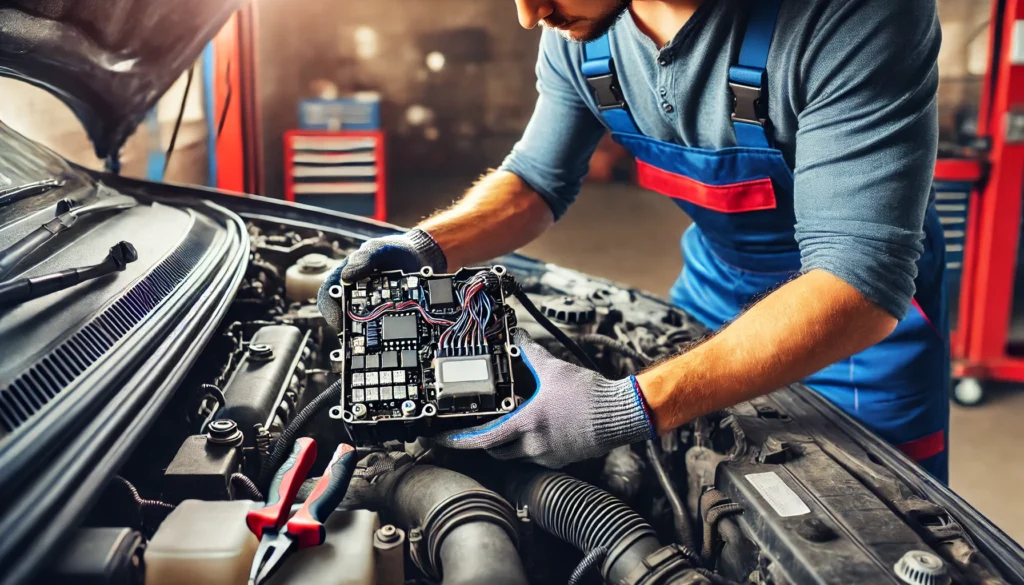The Anti-lock Braking System (ABS) is a vital safety feature in modern vehicles, designed to prevent the wheels from locking up during braking and maintain steering control. When the ABS system malfunctions, it is essential to address the issue promptly to ensure vehicle safety. This blog will guide you through the steps to diagnose, repair, or replace a bad ABS system.
Diagnosing a Bad ABS System
- Check the ABS Warning Light:
- Steps: If the ABS warning light is illuminated on the dashboard, it indicates a fault in the system.
- Importance: The warning light is the first sign of a problem that needs to be addressed.
- Use an OBD-II Scanner:
- Steps: Connect the scanner to the vehicle’s OBD-II port to read the error codes related to the ABS system.
- Importance: The error codes help identify the specific issue, such as a faulty sensor or a malfunctioning ABS control module.

- Inspect ABS Components:
- Steps: Check the wheel speed sensors, wiring, and the ABS control module for any signs of damage or wear.
- Importance: Visual inspection can help identify obvious issues that may need repair or replacement.
Repairing the ABS System
- Cleaning or Replacing Wheel Speed Sensors:
- Steps: Locate the wheel speed sensors at each wheel. Remove any dirt or debris and, if necessary, replace faulty sensors.
- Tools Needed: Wrenches, cleaning supplies, replacement sensors (if needed).
- Importance: Dirty or damaged sensors are a common cause of ABS faults.
- Repairing or Replacing Wiring:
- Steps: Inspect the wiring connected to the ABS components for any signs of damage or corrosion. Repair or replace faulty wiring as needed.
- Tools Needed: Electrical tape, wire connectors, replacement wiring.
- Importance: Faulty wiring can disrupt the communication between the ABS components and the control module.
- Replacing the ABS Control Module:
- Steps: If the ABS control module is faulty, it may need to be replaced. Disconnect the battery, remove the old module, and install the new one.
- Tools Needed: Wrenches, screwdrivers, replacement ABS control module.
- Importance: The control module is the brain of the ABS system, and a faulty module can cause the entire system to fail.

Replacing the ABS System
- Gather Necessary Parts and Tools:
- Parts Needed: ABS control module, wheel speed sensors, wiring harnesses.
- Tools Needed: Wrenches, screwdrivers, OBD-II scanner, electrical tools.
- Follow the Manufacturer’s Instructions:
- Steps: Refer to the vehicle’s service manual for specific instructions on replacing the ABS system components.
- Importance: Following the manufacturer’s instructions ensures proper installation and operation of the new ABS components.
- Install the New Components:
- Steps: Remove the old ABS components and install the new parts, ensuring all connections are secure and correctly placed.
- Importance: Proper installation is crucial for the ABS system to function correctly.
- Test the New ABS System:
- Steps: After installing the new components, use the OBD-II scanner to clear any error codes and test the ABS system to ensure it is working correctly.
- Importance: Testing the system ensures that the new components are functioning as expected and that the ABS warning light is no longer illuminated.
Conclusion
Repairing or replacing a bad ABS system is essential for maintaining vehicle safety and performance. By diagnosing the issue, cleaning or replacing faulty components, and following the manufacturer’s instructions, you can ensure that your ABS system functions correctly. Regular maintenance and prompt repairs will help keep your vehicle safe on the road.